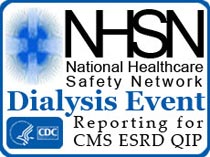Changing the Lives of Kidney Patients: Interview with an American Nephrologist

Why are there more and more patients with renal failure today? What is their chance of living to old age and what are the problems with the treatment of such patients? We interviewed Dr. Kirk Keller, a board-certified nephrologist from UCLA Medical Center.
– What are the main types of therapy currently in use? And what changes are required in this area?
– The options are few – dialysis, transplant, or death. There are two types of dialysis – hemodialysis (when the patient arrives at the center, he or she is connected to a special apparatus and it helps purify the blood) and peritoneal dialysis (when the patient changes the solution through a catheter installed in advance in the abdominal cavity).
We have the vast majority of patients on hemodialysis, but not so many on peritoneal.
As for kidney transplants – now we do them more than ever before, about 1,200 a year in the USA. The waiting list for transplants is impressive. The reason for the lack of a sufficient number of transplants is the shortage of donor organs.
And not all constituent entities of the USA have transplant centers that are actively working in the country. Therefore, those who need to travel from afar to Los Angeles find it difficult to organize it.
– What are the main disadvantages of the current practice in this area, and how can they be eliminated or neutralized?
Dialysis practice has made a big step forward. In 1998, we had 5 thousand patients on dialysis, today – 45 thousand, and their number is increasing every year by about 10%. This is a good indicator. Small towns have more problems. There are few nephrologists, a rare profession… As a result, we have patients who already require dialysis. Patients can be treated in the early stages but they do not even know that they are sick.
The very quality of dialysis in our country is no worse than in other countries. We have international networks, companies that monitor the quality of equipment. The results of transplantation are the one of best in the world. But we are still losing a lot in early diagnostics.
– What opportunities exist to increase life expectancy and improve the quality of life of such patients?
– Kidney diseases are considered 7-9 most common causes of death.
It is possible to increase the survival rate and quality of life by treating all the chronic syndromes and controlling blood pressure.
Funding is a serious problem today. Some regions do not have enough money for many important thongs. In big cities, patients receive everything. And there is simply nothing in some small regions. Some renal disease medications are very expensive too. I heard some patients even had to take out payday loans in Illinois. They simply had no other alternatives. Fortunately, they were able to quickly repay their debts. Well, in my opinion, people should take payday loans only in emergency situations, and the purchase of life-saving medications is exactly the case.
The good news is, first, kidney disease is preventable if it is detected early. And, secondly, there is dialysis and transplantation – even for those whose kidneys do not work at all or are completely absent. They have no urine, but nevertheless, they live for years, decades. We have a patient who has been on dialysis for 33 years. This is a very good time for substitution therapy.
Also, many patients with transplanted kidneys live for more than 20-25 years. Not everyone, of course, is so lucky – much depends on age, concomitant diseases. When elderly cancer patients use dialysis, one cannot count on a long life expectancy. But a relatively healthy man of about forty years of age can count on life expectancy which doe not differ from the average in the population.
– There are many reports of an increase in the number of patients with renal failure. Why is this happening?
– The growth of patients with renal failure is indeed observed all over the world. The main reason is the aging of the population, diabetes mellitus, hypertension and only then – the kidney disease itself.
The growth of patients is due to objective reasons – the better we treat other diseases, the more patients with renal failure will be identified.
Aside from hereditary abnormalities, all other types of kidney disease are associated with age in one way or another. Only patients over 70 years of age with ischemic nephropathy – atherosclerotic lesions of the renal vessels – are 10% of those who get dialysis today. Previously,
Every tenth inhabitant of the planet suffers from kidney disease and, as a rule, does not notice it – that’s why they are called “silent killers”. There are about 1 million such people in the USA. A small part of the disease progresses to the final. And the end can be either death (usually from cardiovascular diseases) or kidney death.
– Why is this happening, what lead to this?
– There are acute cases of renal failure and chronic ones. Both are due to the influence of additional external factors, for example, injuries. Or, for example, a marathon race – only healthy people can do this. People with hidden kidney diseases should not enter the army and production facilities with difficult and harmful conditions, otherwise, the disease will progress very quickly – to dialysis or transplantation. For example, marches in the army in renal patients can lead to acute renal failure.
But there are simple and effective ways to hold the disease back.
Chronic kidney disease can be detected in the early stages when it is still possible to slow down its development. It is impossible to stop the disease completely. But you can slow it down for many years.
To do this, you need to regularly take tests, unfortunately, they are not included in the clinical examination. The simplest and most affordable are biochemical tests: blood creatinine, blood urea, hemoglobin, urine analysis for protein. An ultrasound is used to check the kidney structure, size, presence of stones. This way you can identify kidney failure and kidney disease in the early stages when you can still protect the kidneys by giving medications, controlling blood pressure, controlling sugar in diabetics, and minimizing the amount of protein in the urine.
– How has the situation with the provision of care for renal failure patients changed over the past 5-7 years?
– The drug supply has even worsened, in addition, the problem of the lack of nephrologists has to be solved. I have already said that this is a rare specialty. Nephrologists work with critically ill patients requiring increased attention. But we are optimists, we believe that in the future the detection rate will improve, there will be more opportunities to treat the disease in the early stages. We believe in the best.







